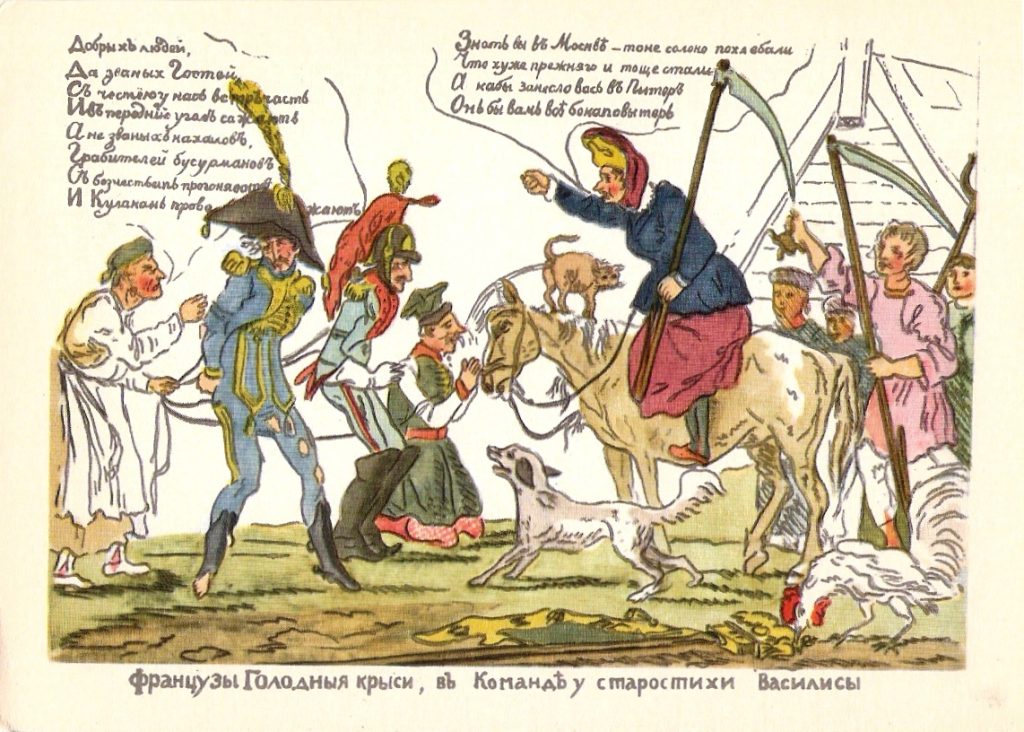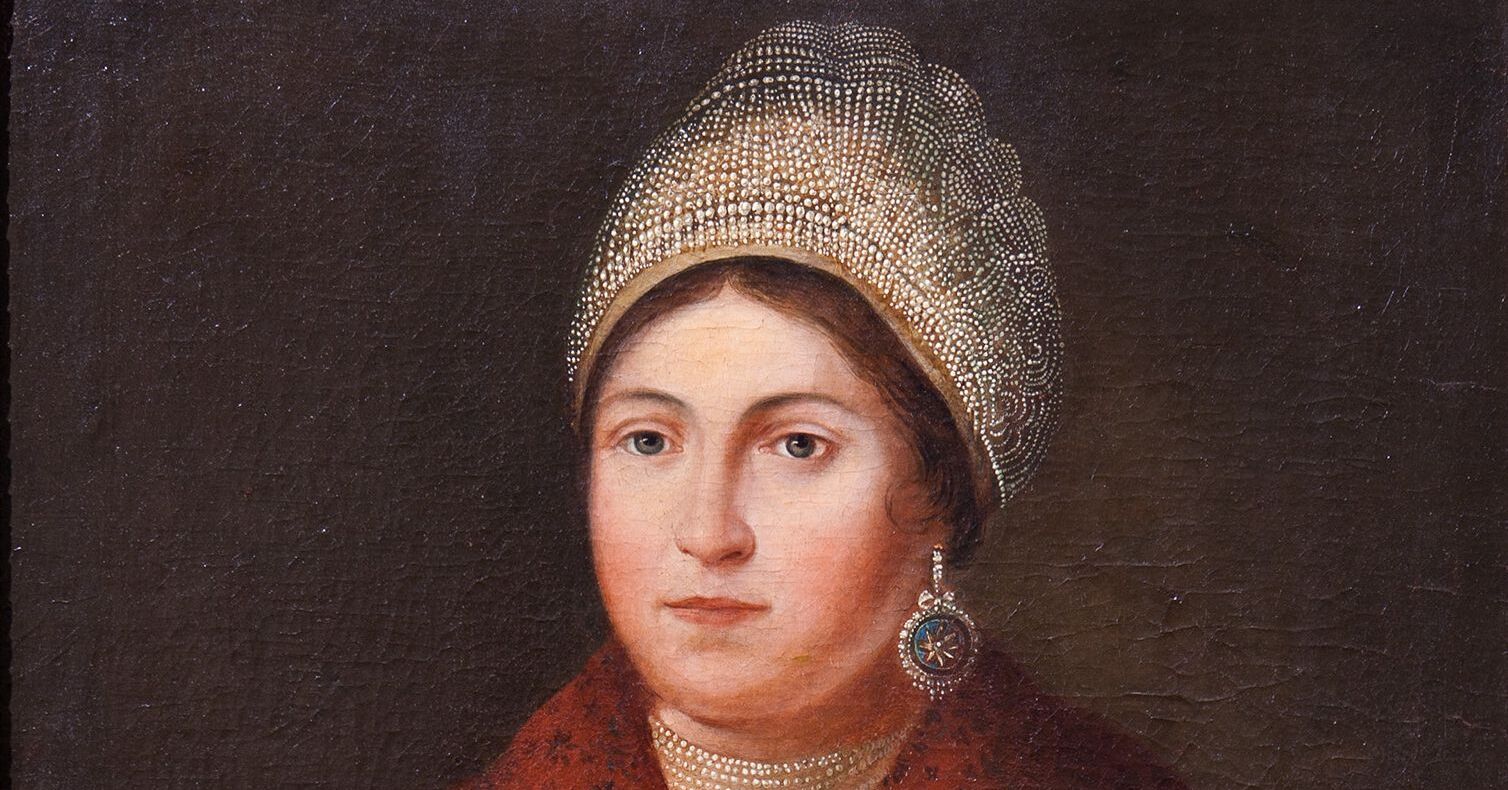It is widely believed that during the war with Napoleon, a partisan detachment led by a woman named Vasilisa operated in the Smolensk province. We checked whether this really happened.
The story of a simple Russian peasant woman who defended the country from the French became popular two centuries ago. “Elder Vasilisa, who killed hundreds of Frenchmen” mentions in the fourth volume of War and Peace by Leo Tolstoy. But real fame came to her already in Soviet times: with her image released postage stamp, and in the west of Moscow a street was named in her honor. In 2012, when the 200th anniversary of the war with Napoleon was celebrated, the Central Bank of the Russian Federation released a commemorative coin dedicated to Vasilisa. Two years later on screens came out the film “Vasilisa”, where Svetlana Khodchenkova played the partisan.
For the first time about Vasilisa Kozhina wrote in 1812 in the magazine “Son of the Fatherland”. The author of a short text with reference to an unnamed merchant says: “The headman of a village in Sychevsky district led a party of prisoners to the city. In his absence, the peasants brought several more French people captured by them, and gave them to their elder Vasilisa to be sent to their destination. Vasilisa gathered the peasants, sat astride her horse, took the scythe in her hands and, riding around the prisoners, shouted in an important voice: “Well, the villains of the French! Get to the front! Go, march!” One of the captured officers, irritated that the woman decided to command him, did not listen to her. Vasilisa immediately hit him on the head with her scythe, he fell dead at her feet, and she cried out: “The same will happen to all of you, thieves, dogs, who just move a little! I’ve already torn off the heads of twenty-seven of your mischief makers! March to the city!” Two years later, the story was included in the “Complete Collection of Anecdotes from the Most Memorable War of the Russians with the French.”
The magazine, which contains the primary source of the story about Vasilis, was not a publication that published scientific works or official information from government agencies. His founded during the Patriotic War “to post reports and private news from the army, to refute harmful rumors about the course of events, to concentrate patriotic opinions.” The editors did not hide the patriotic orientation of the published texts, while the desire for authenticity was not declared anywhere.
Nevertheless, the story from “Son of the Fatherland” led to the appearance of picturesque images of Vasilisa. In 1813, a popular print by Alexei Venetsianov appeared, “The French are hungry rats in the team of the elder Vasilisa” with the caption “Illustration of an episode in Sychevsky district, where the wife of the village elder Vasilisa, having recruited a team of women armed with scythes and drekoly, drove before her several captured enemies, one of whom was killed by her for disobedience.” The drawing was published in Terebenevskaya Azbuka, an educational and patriotic publication for children. In the same year, artist Smirnov wrote a portrait of Kozhina, for some reason placing a medal on her chest on a ribbon installed for an award in honor of the capture of Paris. There is no evidence that this little-known painter created a portrait from life. Apparently, it was in the caption to this painting that Vasilisa’s surname, Kozhina, was first mentioned. Before the revolution, Vasilisa remained a frequent heroine of pseudo-historical fiction, and the authors of such works did not hesitate to supplement facts known from the original source. For example, in one of these novels she wears surname Tulyaev, and lives either in the village of Pristenki or in the village of Sychevka.

During the Soviet years, the story of Vasilisa Kozhina continues to acquire new details, but no references to any newly discovered sources appear. In the monograph by historian Nikolai Garnich, Vasilisa already commands a partisan detachment. The same story is also in the work of Evgeniy Tarle, who, however, emphasizesthat it is impossible to separate legends and rumors from facts when talking about Vasilisa. In the article in the Great Soviet Encyclopedia indicated: “Vasilisa (years of birth and death unknown), partisan of the Patriotic War of 1812, peasant woman, elder of the Gorshkov farm, Sychevsky district, Smolensk province. Having organized a detachment of partisans from teenagers and women, armed with scythes, pitchforks, axes, etc., K. destroyed and captured soldiers of the Napoleonic army during their retreat from Russia. She was awarded a medal and a cash prize." Note that this short text is strikingly different from the memoirs of contemporaries. At the same time, the author of the article does not refer to any sources (compare at least with articles about the same Lev Tolstoy or Mikhail Kutuzov).
The fact that Vasilisa appeared on the pages of history textbooks already in Soviet times, although in the Russian Empire they wrote about the war of 1812 as a “people's war,” also makes one think. The authors emphasized the heroism of the common people and widespread patriotic enthusiasm. Modern textbooks they tell about Vasilisa without any special details: “Vasilisa Kozhina, a peasant partisan of the Sychevsky district of the Smolensk province, acquired all-Russian fame for her courageous actions against enemy troops.” Publicist Andrei Arkhangelsky, after the release of the film “Vasilisa,” turned to the staff of the Institute of History of the Russian Academy of Sciences for comment. Scientists explainedthat “Vasilisa Kozhina is most likely a mythical character.”
It will probably never be possible to find out the truth. There is a clear explanation for this: despite the popular nature of the war, which was emphasized two centuries ago, historical science is obliged to operate on surviving sources. The peasants simply did not leave the latter in sufficient numbers, because many were illiterate, and the state did little to document their life during the war. This difference in the level of reliability becomes clear if we compare the number of known facts about Vasilis with the biography of the partisan Denis Davydov or cavalry maiden Nadezhda Durovawho came from the nobility. The lack of facts not only allows the creation of myths that can neither be confirmed nor refuted, but also frustrates historians, who are deprived of the opportunity to reliably study the lives of individual representatives of the majority of the population of that time.
Legend
- http://www.museum.ru/museum/1812/Library/Markin1/index.html
- https://www.kommersant.ru/doc/2009518
- https://daily.afisha.ru/archive/vozduh/cinema/vasilisa-so-svetlanoy-hodchenkovoy-opolchency-i-blondinka/
If you find a spelling or grammatical error, please let us know by highlighting the error text and clicking Ctrl+Enter.







